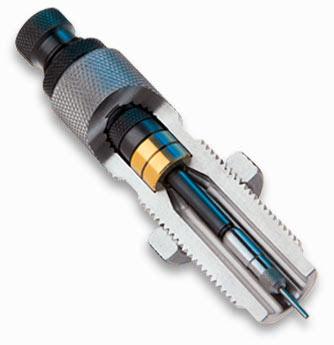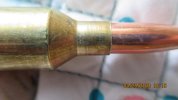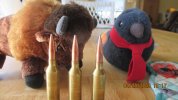Cnkhunting
Well-Known Member
What is the thinnest you would turn your necks to? I have Winchester brass for my 7mag and before turning it's reading spots that are 9 thou to 12 thou.
 Help Support Long Range Hunting Forum
Help Support Long Range Hunting Forum
We don't go any thinner than 12.5 and sometimes 12.0 with 0.223 or 0.204.What is the thinnest you would turn your necks to? I have Winchester brass for my 7mag and before turning it's reading spots that are 9 thou to 12 thou.
Your chamber neck is ~.298 and your loaded necks are .290?My 6.5 rounds after firing measure .297 (brass spring back) and upon bullet seating measure .290, (.003-.004 radius reduction).

| The amount of resizing provided by conventional reloading dies has always been dictated by the manufacturing tolerances (SAAMI specifications) of the brass cartridge case itself. Reloading die manufacturers have been forced to design the neck diameter of their dies small enough to accommodate the thinnest possible brass. This may be as much as .008" - .010" smaller than the maximum cartridge dimensions typically shown in most reloading manuals. Since the majority of cases that the reloader is likely to encounter in the field are thicker than the minimum specifications that the dies were designed for, case necks are often resized excessively. It can be easily demonstrated that excessive resizing of the cartridge case quickly leads to stress distortion and concentricity problems. The new Type S - Bushing Style Dies offer a simple solution to this age old problem." |



This is NOT a recipe to "reduce cold working & extend brass life".My 6.5 rounds after firing measure .297 (brass spring back) and upon bullet seating measure .290, (.003-.004 radius reduction).
Sure is- I do this all the time. Quit turning upon complete clean-up & easy slip fit of bullet into fired case.Its possible to neck turn brass & still use standard fl dies. The reverse of a honed neck die.